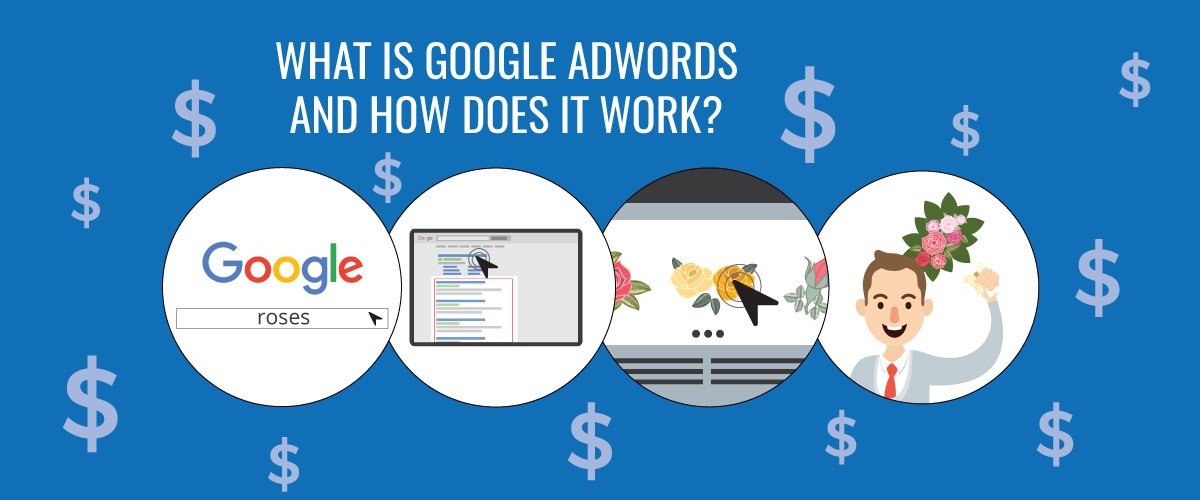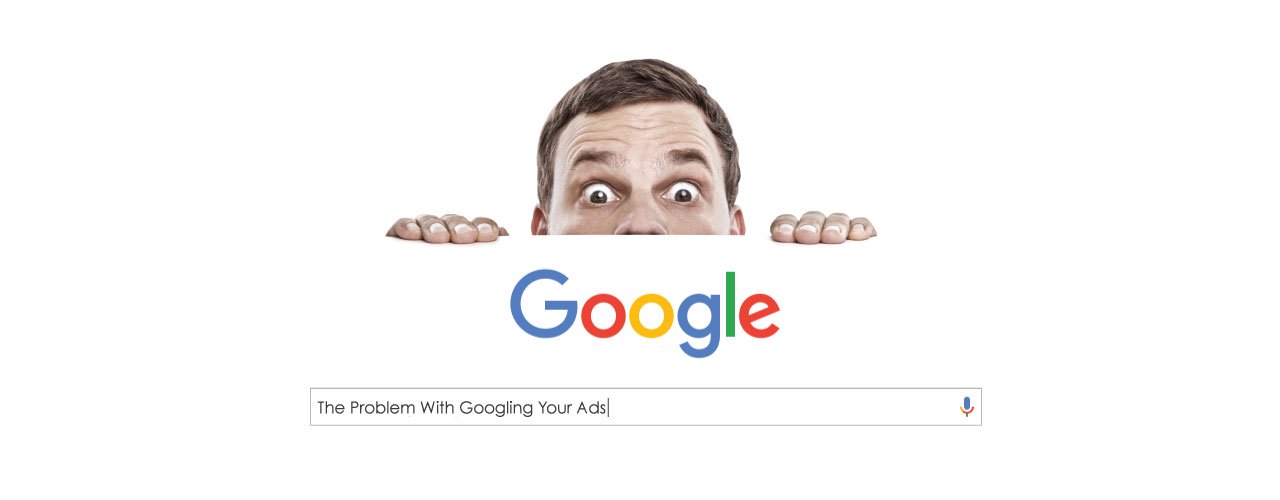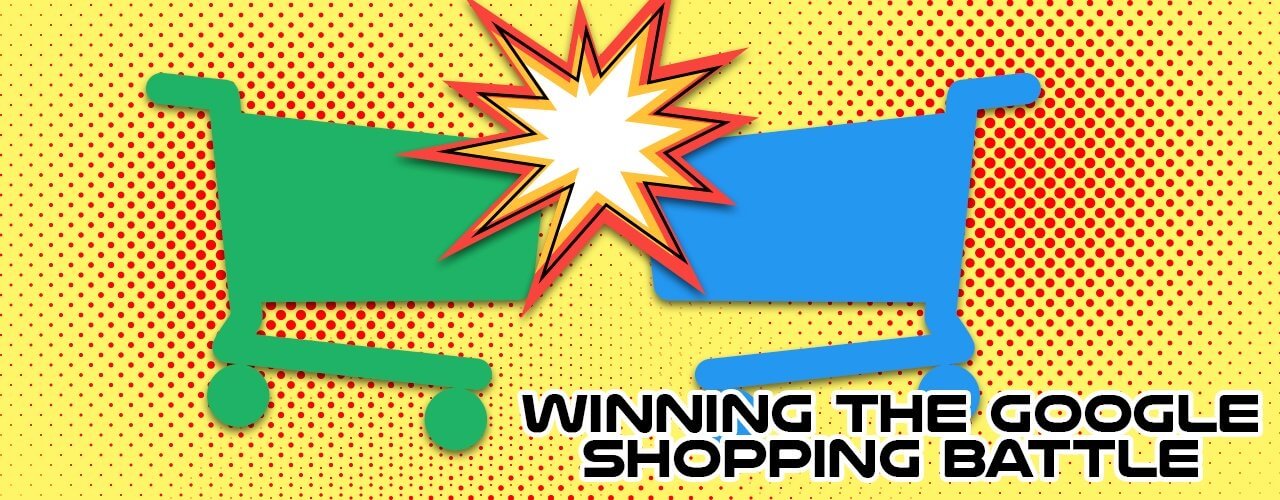A look inside quality score, ad rank, and how the AdWords auction really works.
It’s difficult to succeed with a tool when you don’t fully understand how it functions. We have found that many AdWords users don’t fully understand all of the ins-and-outs of how the system rewards (and punishes) certain advertisers.
This article is designed to walk through the smoke-and-mirrors of the AdWords auction. We want to explain how Google places, charges, and rates advertisers. We’re here to tackle the million-dollar question — what is Google AdWords and how does it work?
AdWords was created to provide a healthy balance of opportunity for customers, advertisers, and (believe it or not) Google themselves. A common misconception in AdWords is if you bid the most, you get the top page position. Unfortunately, this strategy will quickly drain budget and not necessarily provide the best results. Did you know that It can actually work much better to bid for the third position on the page, which is less expensive than the first and second position? In certain accounts, attacking a lower position at a lesser cost can actually yield better results. By monitoring your average page position and conversions, you can assess which position is best for your results and budget.
What is Google AdWords?
Google sums up AdWords as its very own “online advertising platform that can help you drive interested people to your website.”
As an advertiser, AdWords gives you access to millions of Google users across the world and the freedom to structure campaigns and create ads designed specifically for your business’ products or services. The effectiveness of Google AdWords is dependent on the strategy behind it; a well-crafted account can ensure that your ads reach the right people at the exact moment they are searching for a solution your business is able to provide.
There are many advantages to using Google Adwords for your business, but from a customer standpoint, it’s a tool that provides automatic solutions. Google views AdWords similarly. The platform provides useful information to searchers. If people are satisfied, then they will keep coming back to Google for future help.
How does Google AdWords work?
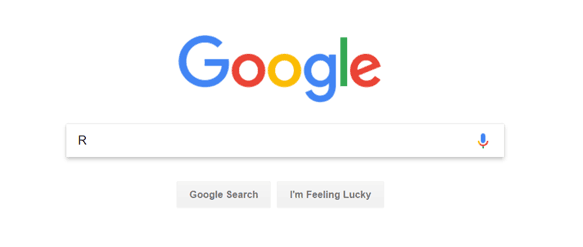
Once someone enters a search query into Google’s engine, the AdWords process starts. AdWords accounts contain ad groups with lists of keywords. When a searcher enters a query into Google that matches a keyword in your account, Google AdWords places your ad into an auction with other eligible advertisers. The outcome of this auction process (which we will go into more detail about later) is the search engine results page (SERP).
Once your ad makes it to the results page, AdWords operates as a pay-per-click (PPC) platform, meaning that you only pay when a user clicks on your ad. This system allows flexibility — you can decide how much to spend on Google AdWords per day.
AdWords works better with more information. The more you know about your clientele, the more customized you can make AdWords to serve that market. For example, if you know that your client market is typically over the age of 50 and is price sensitive, you can set up a specific Remarketing campaign for the Search Network that advertises to users over the age of 50 and use specific messaging that includes a promo code.
Now that we’ve set a foundation of the basic operations and understanding behind Google AdWords, let’s dive below the surface and identify the internal factors that determine how ads are ranked.
Quality Score & Ad Rank
Google focuses heavily on its paid ads’ quality and user experience. Afterall, if the ads showing up on Google were spammy and irrelevant, it would undermine the entire website’s validity. In order to keep results relevant, Google uses a metric called “Quality Score” to determine where certain advertisers show (Ad Rank) and how much they pay for each click. Each keyword in your account has a Quality Score and scores are assigned on a 1-10 scale. The three factors of Quality Score are:
- Expected clickthrough rate (CTR)
- Landing page experience
- Ad relevancy
Expected CTR measures the probability that your ad receives a click when shown for the assigned keyword. Google pulls historical data of your ad’s performance under that keyword to see if searches previously found it relevant. Then, Google determines if future searches will find your ad relevant under that keyword.
Landing page experience measures the quality of the webpage where traffic is directed after they click on your ad for that particular keyword. High quality landing pages should be content rich, directly related to your associated keyword, and contain the exact information needed to answer their search query. The page should be easy to navigate, clear in context, and have a low bounce rate.
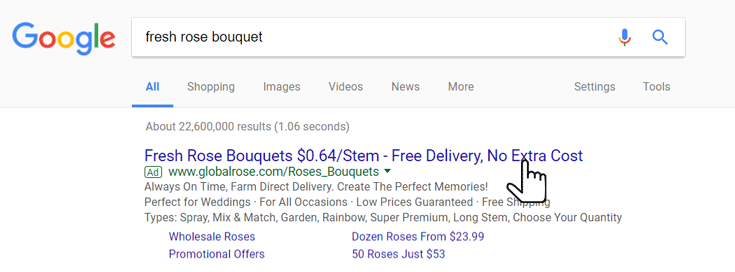
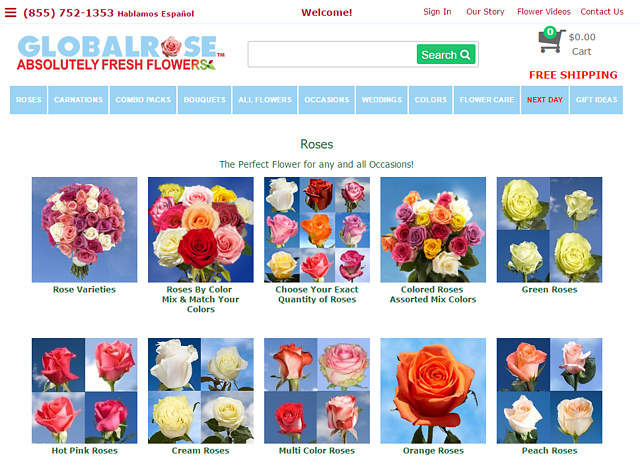
Ad relevance is how Google determines if your ad copy is relevant to your selected keyword and aligned to users’ searches. It’s always a good idea to have your keyword in your ad copy to increase relevance and help searches know you carry that product or provide that service.
Tip: Ad extensions and other ad formats can help boost your ad quality and overall Ad Rank. Extensions are a great way to provide users with more relevant and accessible information.
It’s important to keep in mind that Quality Score estimates your overall ad performance in past ad auctions for each keyword, while Ad Rank is calculated at the time of the ad auction, using real-time data. If you make a change to ad copy that has a historical “below average” grade for ad relevancy, know that change might take time to change your Quality Score while it could affect your Ad Rank more quickly.
The best rule of thumb for making changes in your account based on low Quality Scores is to put yourself in your audience’s shoes. If you conduct a specific search for your product, what type of ad should you see? Where should that ad link?
*Recent Google Update: You can now access “Quality Score” columns within AdWords to view historical data of your Quality Score, expected CTR, landing page experience, and ad relevance. See Google’s official announcement to learn how to access the new columns in your account.
How does the AdWords auction work?
Outside of just relevancy, Google has another determining factor that it looks at in the auction process: budget. But it doesn’t operate the way that most people expect — the top-prize (which, in this case is the top position on the results page) does not simply go to the person who bids the most. The AdWords auction uses a unique bidding system that is heavily-based on ad quality and maximum bid amount. The person with the highest ad quality and the highest bid will win the auction using the minimum amount needed to beat their competition.
Let’s take a look at this example from Google:
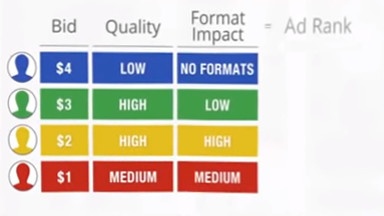 Four advertisers are competing for the top three spots on the results page. To determine ad position, Google will compile a score for each advertiser called Ad Rank. Ad Rank is calculated using the advertiser’s bid, ad quality (expected CTR, landing page experience, and ad relevancy), and the use of any ad extensions or formats.
Four advertisers are competing for the top three spots on the results page. To determine ad position, Google will compile a score for each advertiser called Ad Rank. Ad Rank is calculated using the advertiser’s bid, ad quality (expected CTR, landing page experience, and ad relevancy), and the use of any ad extensions or formats.
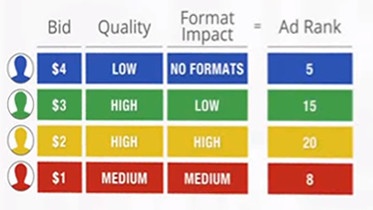
Notice, the two advertisers with high quality ads have the highest Ad Rank, while the advertiser with the highest bid has the lowest Ad Rank. This is because Google cares more about giving the user great information and a high quality experience over settling for the highest bidder.
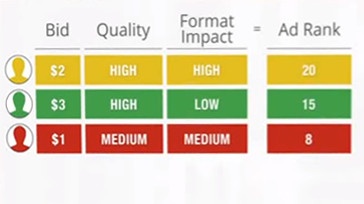
In the end, the advertiser with the highest bid is outranked and doesn’t win a spot on the results page because of low quality ads. In this example, the winning advertiser only has to pay $2.00 to rank for the top spot because that was the minimum amount needed to beat out the competition.
Tip: Creating high-quality ads will improve your Ad Rank and save you money. Since you only need to pay the minimum amount needed to beat your competition, advertisers with high quality ads often spend even less than their bid and are still able to outrank competitors.
As an advertiser spending money on the AdWords platform, you always want to provide the best information to your ideal customers which helps your end performance. AdWords isn’t something you can master in a day, but learning a little bit at a time helps move you towards a better return on ad spend.
As you create new campaigns and write better and better ad copy, keep in mind the real importance of Google AdWords— offering great solutions to the people looking for your help.
